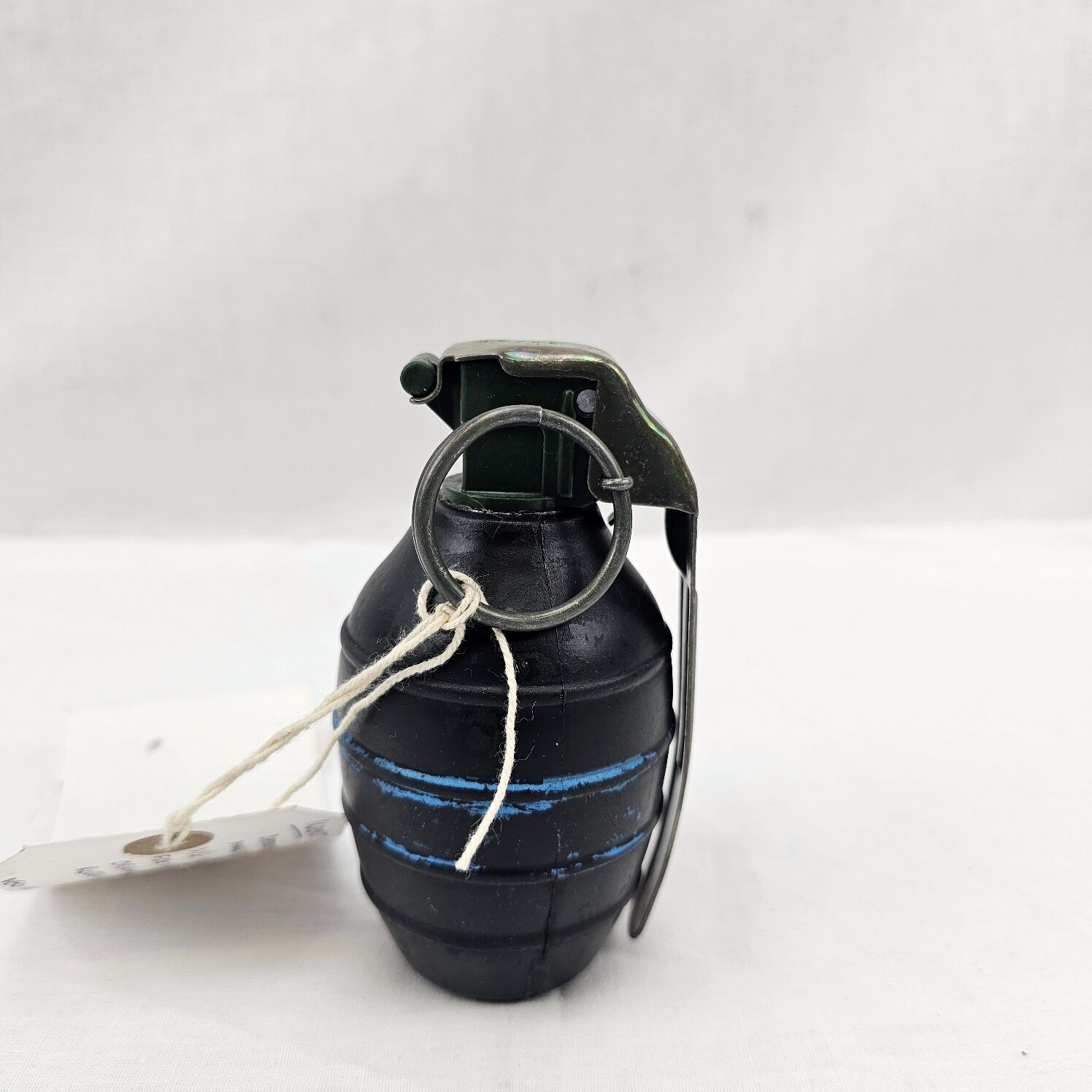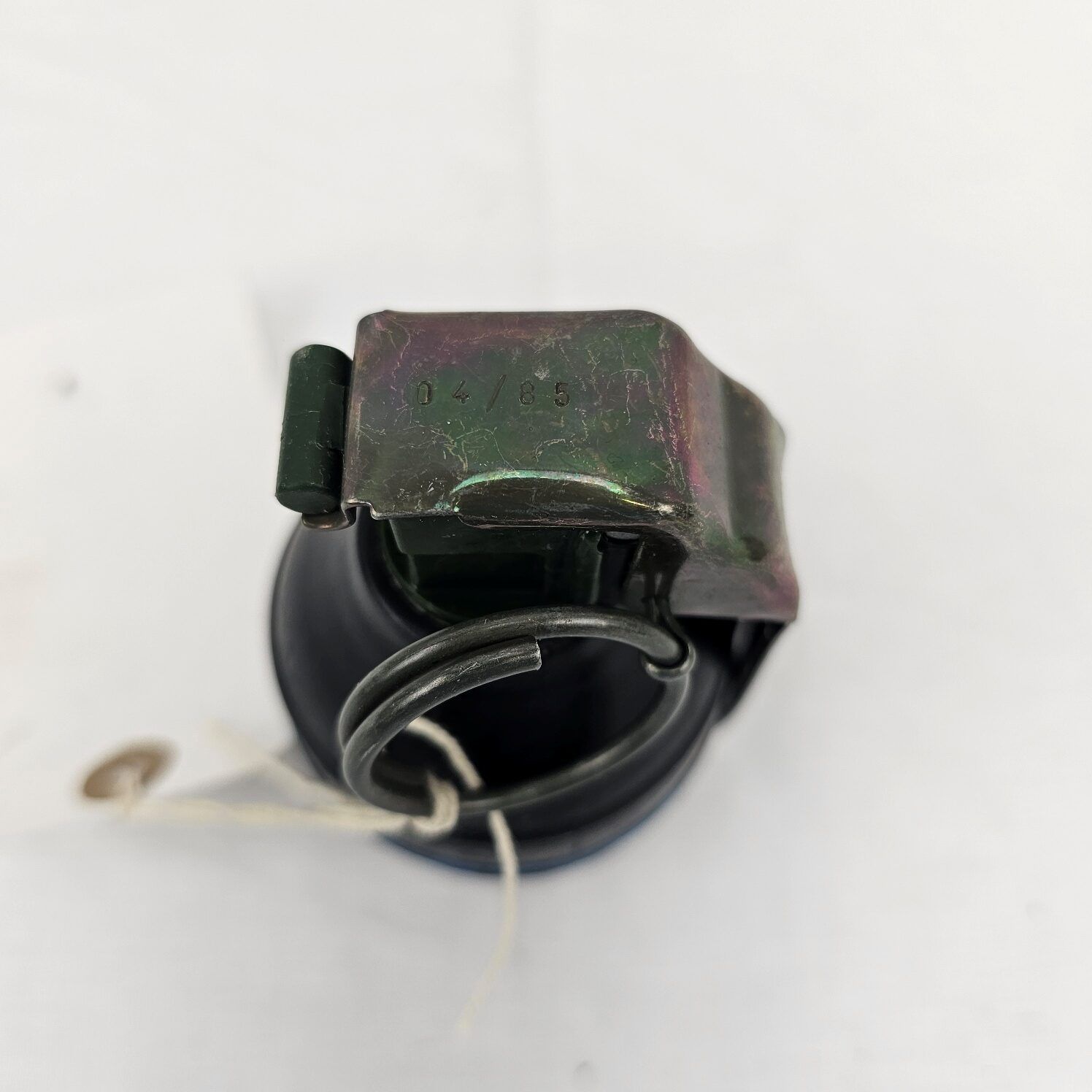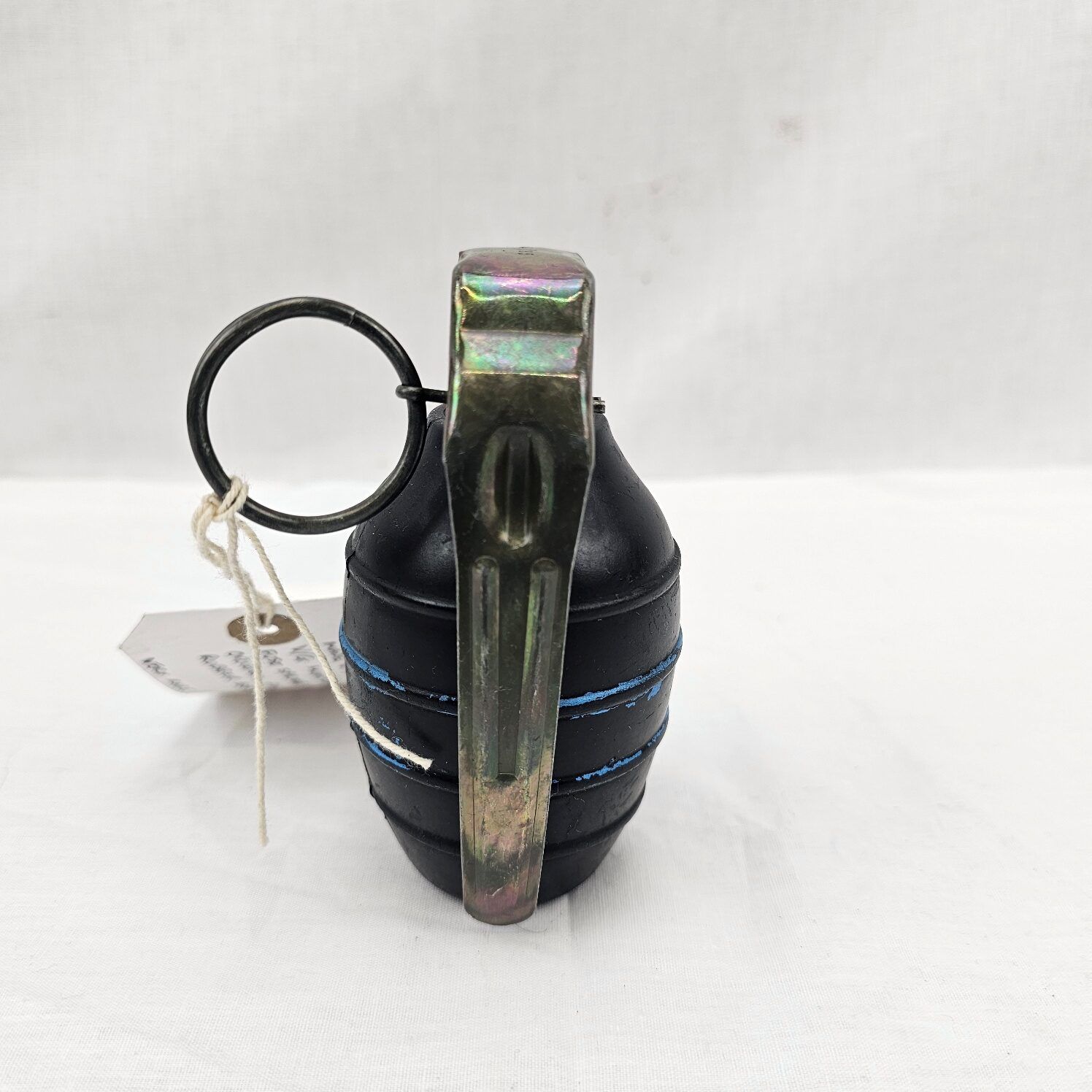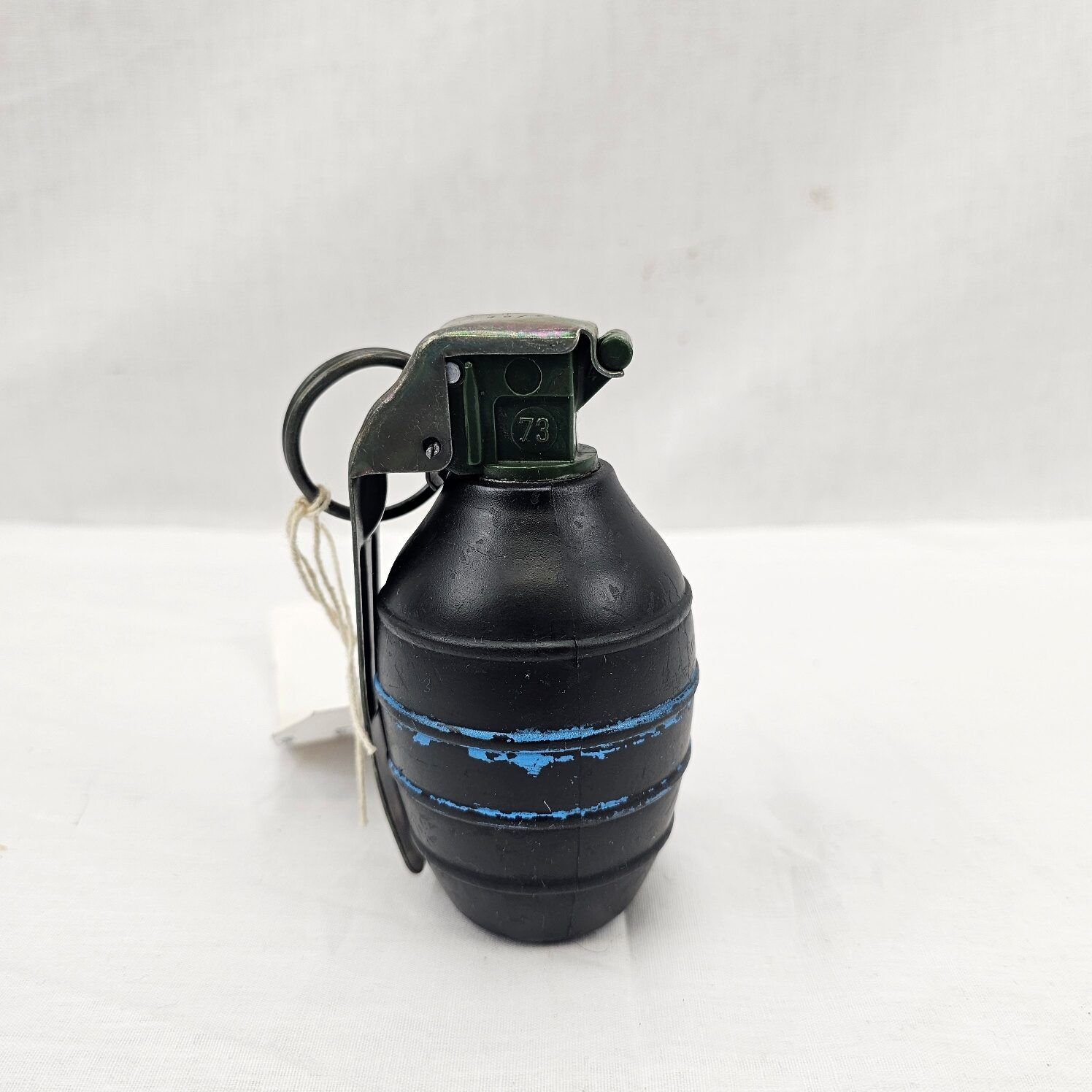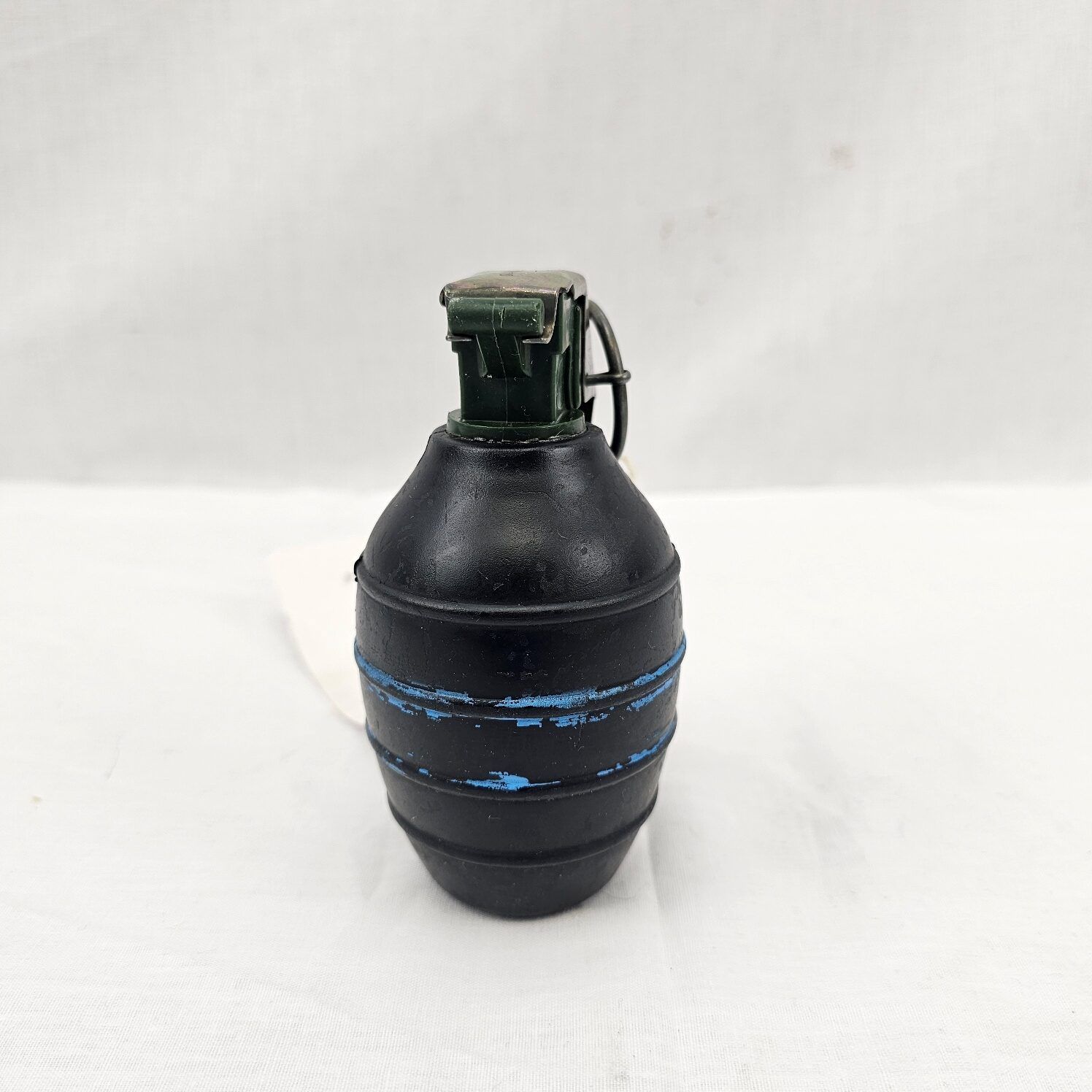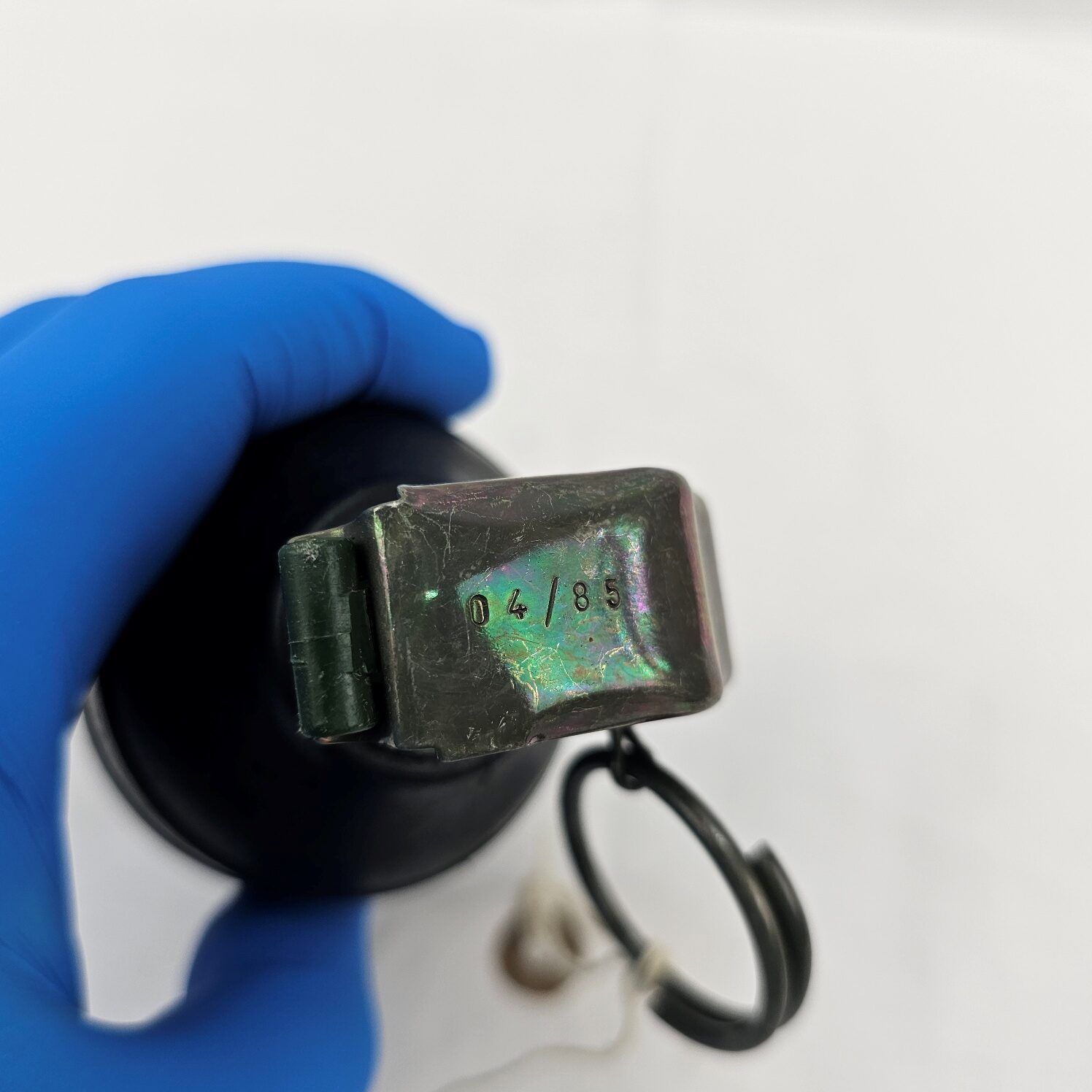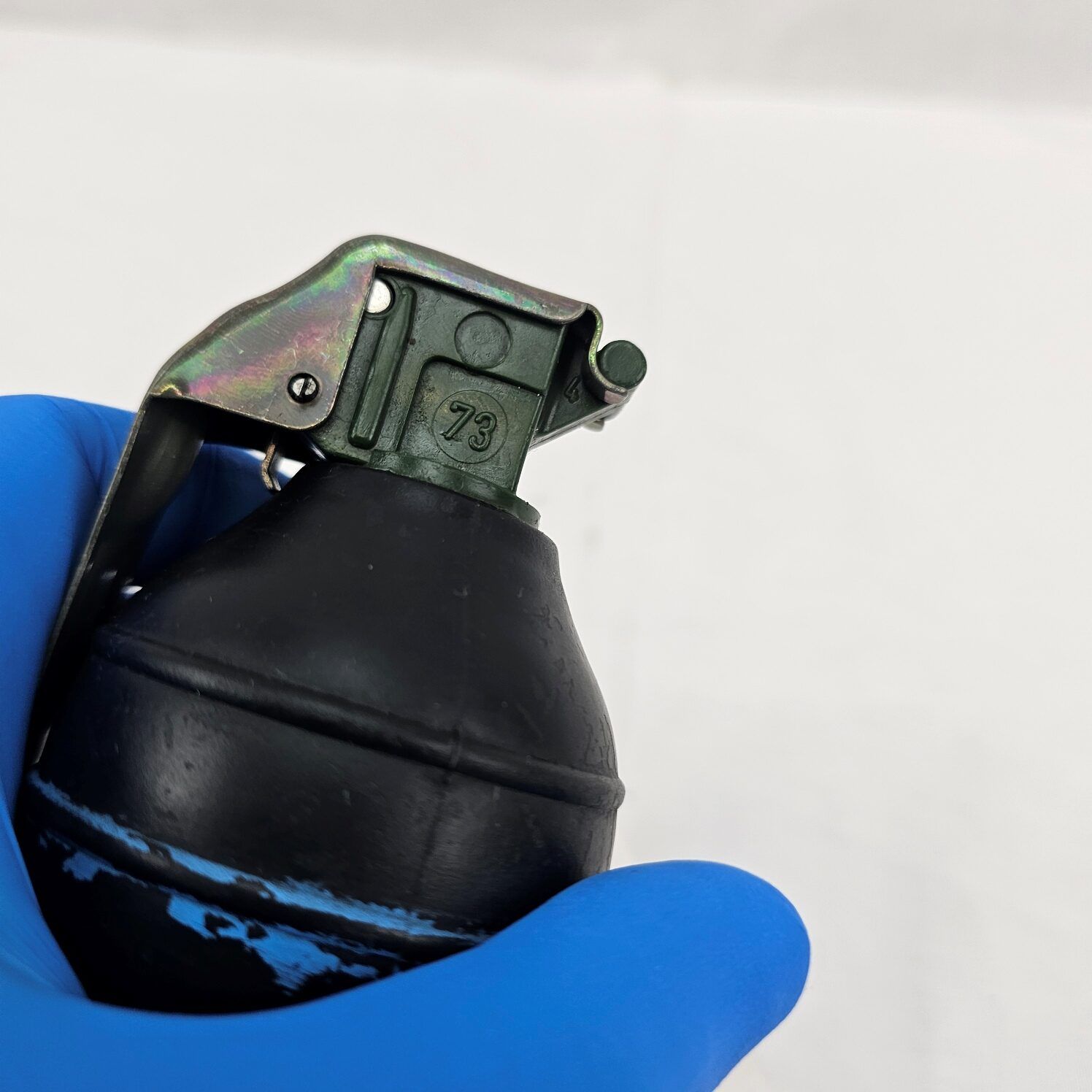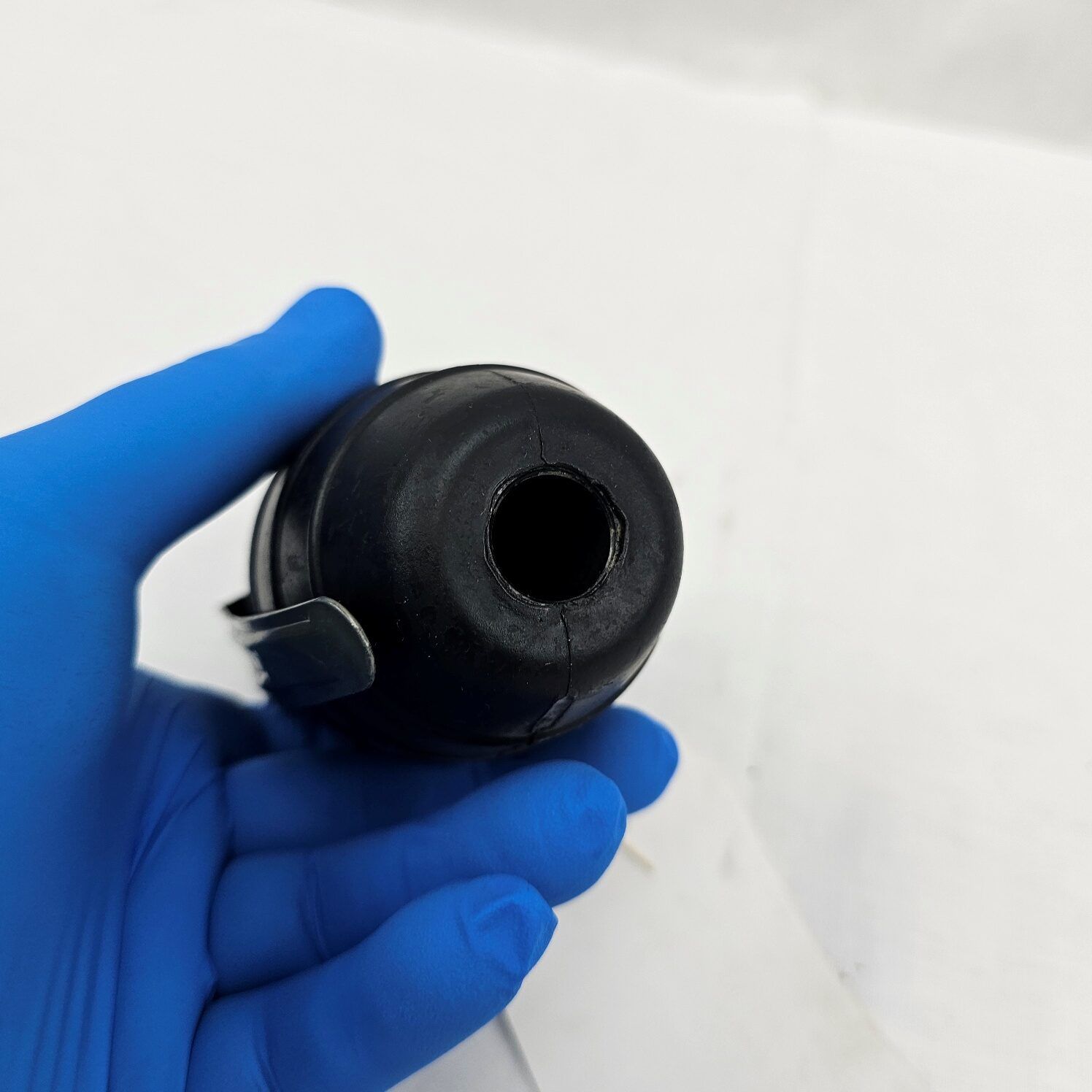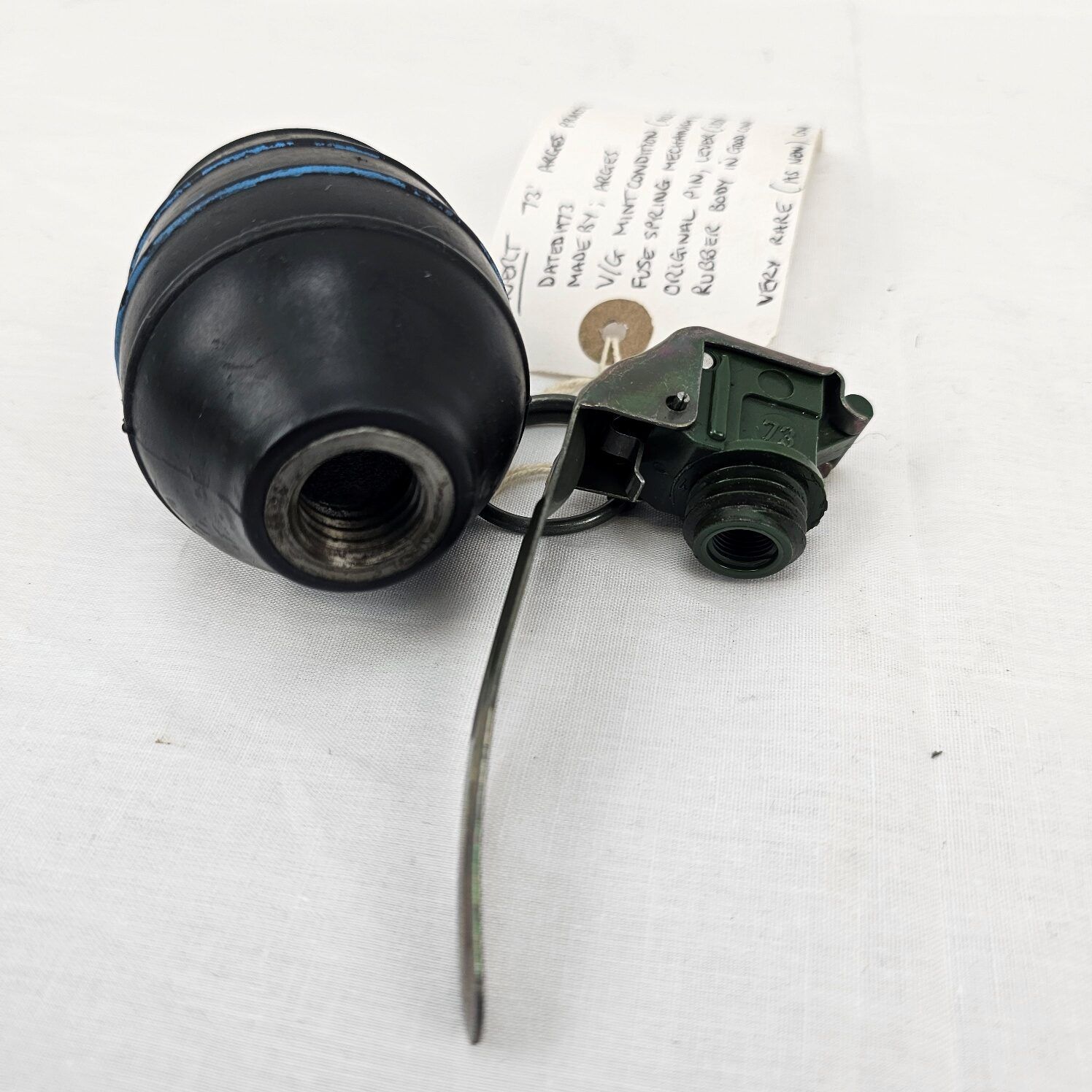~ Argentinian 73 Practice Grenade – Rare ~
The Argentinian 73 Practice Grenade is a training tool designed to mimic the characteristics of a live grenade for instructional purposes. Its purpose is to provide realistic training for military personnel in the safe handling, throwing, and tactical use of hand grenades without the risk of live explosives.
Development and History:
Post-1970s: The Argentinian military developed the 73 Practice Grenade in the 1970s to improve the training of soldiers in grenade handling and usage.
Training Necessity: Realistic training tools were needed to ensure that soldiers could effectively use grenades under combat conditions, leading to the development of practice grenades that could simulate the weight, feel, and operation of live grenades.
Design and Features:
Inert Materials: The grenade is made from materials that are safe for training purposes, typically metal or plastic, and filled with a non-explosive substance to simulate the weight of a live grenade.
Physical Characteristics:
Shape and Size: The practice grenade mirrors the shape and size of a live grenade, often resembling the M26 or similar models used by the Argentinian military.
Weight: The weight is carefully calibrated to provide realistic throwing practice.
Color Coding: Often painted in distinctive colors (such as blue) to differentiate it from live grenades, preventing accidental use in combat situations.
Components:
Body: A robust shell that can withstand repeated handling and impacts.
Fuze Assembly: An inert fuze assembly that functions like a live grenade but without the explosive component. It may include:
Safety Pin and Lever: These components function identically to those on a live grenade, teaching proper handling and arming procedures.
Simulated Detonator: Often includes a mechanism that produces a small audible or visual cue (like a puff of smoke) to indicate “detonation” for training feedback.
Operation:
Preparation: Soldiers remove the safety pin while holding the safety lever.
Throwing: Upon throwing the grenade, the safety lever is released, simulating the arming process.
Simulated Detonation: The grenade produces a non-hazardous indication of detonation, allowing trainers to assess the throw and its effectiveness.
Advantages:
Safety: Provides realistic training without the risks associated with live explosives.
Cost-Effective: Reusable design reduces the costs compared to using live grenades for training.
Realism: Accurately simulates the handling and operation of live grenades, improving soldier preparedness.
Disadvantages:
Lack of Explosive Feedback: Does not fully replicate the noise and effects of a live grenade, which may limit some aspects of realism.
Wear and Tear: Repeated use can lead to wear and tear, requiring regular maintenance or replacement.
Usage:
Basic Training: Used extensively in basic training to teach recruits the fundamentals of grenade handling and usage.
Advanced Training: Employed in advanced tactical training scenarios where soldiers practice grenade throws in realistic combat settings.
Simulation Exercises: Integrated into larger simulation exercises to provide comprehensive training experiences without the risks of live munitions.


